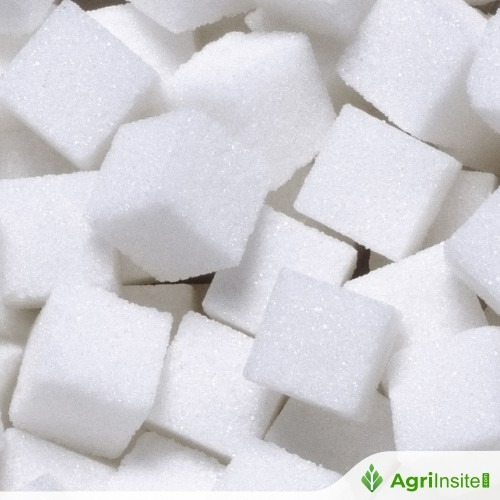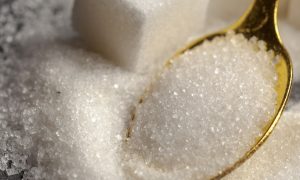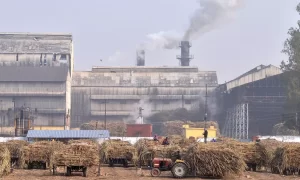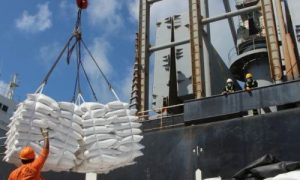Modernization, plantation expansion crucial for sugar self-sufficiency

Indonesia aims to achieve household sugar self-sufficiency by 2028 and industrial self-sufficiency by 2030. Efforts include modernising mills, reopening factories, expanding sugarcane plantations, and improving farmer support. The government targets boosting productivity from 4 to 14 tons/hectare. Despite challenges, the strategy reflects strong commitment to food sovereignty and reduced import reliance.
Jakarta (ANTARA) – Indonesia is pursuing its ambitious dream of sugar self-sufficiency, aiming for household sugar self-sufficiency by 2028 and industrial sugar self-sufficiency by 2030.
This ambitious target goes beyond just meeting domestic demand; it also aims to reduce reliance on imports, which have burdened the trade balance.
Agriculture Minister Andi Amran Sulaiman expressed optimism that Indonesia will achieve the self-sufficiency target within two to three years.
In the last few years, the national demand for sugar has steadily increased. Based on data from the Ministry of Agriculture, sugar needs in 2025 are projected to reach 9.1 million tons, comprising 3.4 million tons for households and 5.7 million tons for industrial use.
Meanwhile, national sugar production in 2025 is expected to reach 2.9 million tons, falling short of domestic demand.
The gap between production capacity and needs forces Indonesia to import millions of tons of sugar annually. Besides straining the trade balance, this dependence makes the state more vulnerable to global price volatility and supply crises.
To reduce the gap, the government is taking several strategic measures. A primary focus is modernizing and expanding the milling capacity of existing sugar factories. This is because most sugar factories in Indonesia are old, with technology that is far behind that of other producing countries.
State-owned plantation holding company PTPN III, through its subsidiaries, will reactivate several sugar factories that have long been non-operational. Preparations have been made, including human resource preparation, factory facility readiness, and coordination regarding the distribution of raw sugarcane for milling.
In 2025, the Bone Sugar Factory in South Sulawesi is targeted for reopening. In 2026, the Sei Semayang Sugar Factory in Medan, North Sumatra, is planned to be made operational again. By 2027, the Tasikmadu Sugar Factory in Karanganyar, Central Java, and the Pangka Sugar Factory in Tegal, Central Java, are expected to become operational again in 2028.
Another major step prepared is expanding sugarcane planting areas. The government is targeting an additional 200 thousand to 500 thousand hectares of new sugarcane plantations.
To achieve this, a large budget of approximately Rp10 trillion (around US$612.6 million) to Rp40 trillion has been allocated.
Data from the Ministry of Agriculture shows a positive trend in sugarcane plantation expansion. In 2022, the area of sugarcane plantations reached 490,008 hectares, decreasing slightly to 489,338 hectares in 2023, and then increasing to 520,823 hectares in 2024.
By March 2025, the area had increased to 529,266 hectares. The area of sugarcane plantations is targeted to reach 538,168 hectares in 2025.
Boosting sugarcane productivity
Farmers undoubtedly play a major role in achieving the goal of food self-sufficiency, including for sugar.
To this end, the government is paying serious attention to sugarcane farmers. One type of support offered is simplifying the low-interest rate People’s Business Credit (KUR) rules for sugarcane farmers, with a loan ceiling of up to Rp500 million (around US$30,677).
Previously, the up to Rp500 million credit ceiling was cumulative. Now, farmers can repeatedly access financing up to this limit without switching to commercial credit after reaching the initial ceiling.
This aims to ensure farmers have sufficient capital to cultivate their land, purchase superior sugarcane cuttings, and access fertilizers and mechanization tools.
Sugar factories are also involved as credit guarantors. Under this scheme, the factories are responsible for the credit, thereby facilitating farmers’ access to financing.
This policy represents a concrete response from the government to the sugarcane farmers’ longstanding aspirations. With this support, the government hopes to enhance both farmers’ welfare and national sugarcane productivity.
The government aims to increase sugarcane productivity from the current 4 tons per hectare to 14 tons per hectare.
This goal is pursued through a more accurate distribution of subsidized fertilizers as well as the provision of high-quality cuttings.
Optimization of sugarcane cultivation is also pursued through land intensification based on geospatial data and land record digitization, which allows a precise approach to fertilization, irrigation, and planting, resulting in maximum outcomes.
The next strategy is taking firm action against fraudulent retailers. The government will revoke the licenses of subsidized fertilizer retailers found engaging in fraudulent activities, including raising prices arbitrarily.
Despite well-designed strategies, challenges remain, including fluctuating sugar prices on the global market, which often impact the competitiveness of local sugar. Apart from that, unpredictable weather conditions triggered by climate change also pose a threat to sugarcane productivity.
Furthermore, coordination between agencies is also deemed crucial. The sugar self-sufficiency program involves the participation of several parties, including the Ministry of Agriculture, the National Food Agency, and regional governments. In this regard, suboptimal synchronization could hamper the target achievement.
The path to sugar self-sufficiency remains long, but optimism must continue to be fired up. Machinery modernization, training for farmers, and involvement of the local community must not be overlooked.
With consistent policies, budgetary support, and commitment from all parties, Indonesia can break free from its dependence on imported sugar.
Sugar self-sufficiency is not merely about production figures but also food sovereignty and farmers’ welfare. As sugarcane fields continue to flourish and mills operate efficiently, Indonesia is starting a new chapter in its long journey toward sugar self-sufficiency.
To Read more about Sugar Industry continue reading Agriinsite.com
Source : Antara News
















